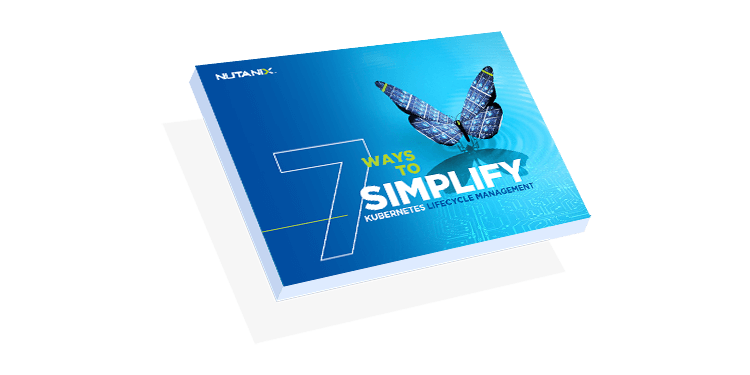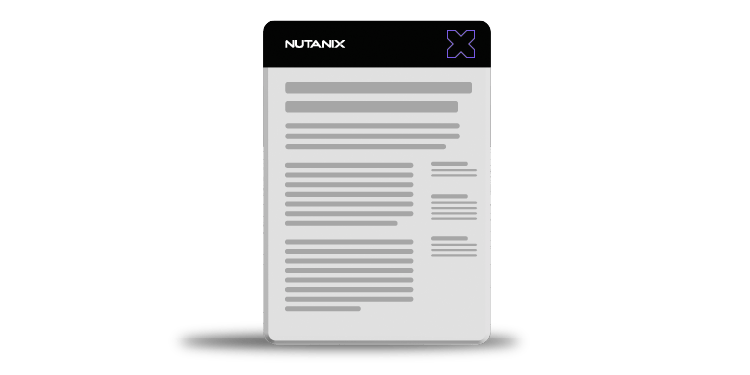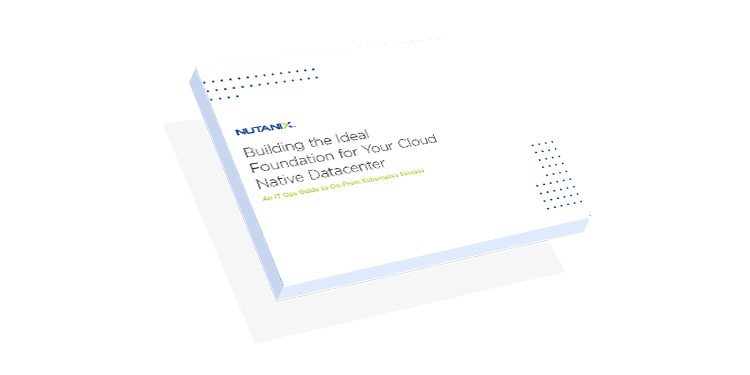What is cloud native?
Cloud native is an approach to software development that capitalizes on the distributed nature of cloud computing, as well as the cloud’s inherent advantages. Cloud-native applications are purpose-built on public, private, or hybrid cloud platforms and their scalability, flexibility, resiliency, and portability to other cloud platforms make them easy to operate and manage. Organizations that adopt a cloud-native approach can gain a competitive edge, thanks to all of the benefits of cloud computing, as well as its ease of customization and the ability to make fast, frequent updates to meet evolving customer needs.
What is cloud-native application architecture?
Traditional applications were developed in one massive block of code that contained every functionality required. They were also typically created for a specific platform or operating system. Improving or updating these apps was difficult and time-consuming.
Cloud-native applications, on the other hand, are modular. They’re built in the cloud and exist only in the cloud. By leveraging cloud benefits, they are much more flexible, scalable, and resilient than legacy apps. They all typically include the following components:
- Microservices – Instead of the large, complex, single block of code used in traditional applications, cloud-native apps use microservices. Developers break up an application into tiny packages of code, each of which focuses on a single, specific business capability. Each microservice has its own set of data. Loosely coupled, they work collectively to create the full application and its services. Microservices are packed into containers and communicate with other microservices as needed using application programming interfaces (APIs).
- Containers – These are lightweight, isolated runtime environments that contain an individual microservice along with its system tools, libraries, and other dependencies. Because containerized microservices can operate independently of any underlying hardware or operating system—as well as other containerized microservices—they can be deployed in almost any environment and don’t interfere with other microservices.
- APIs – Application programming interfaces (APIs) are what allow each containerized microservice to communicate with another microservice or the computing system in general. They can be considered the glue that connects microservices together. In a cloud-native application, an API between two microservices will communicate what each microservice wants and the data it can give the other.
- Orchestration – Containerized microservices and APIs are all managed dynamically via orchestration tools. These orchestration tools can manage the often-complex lifecycles of containers and microservices, as well as optimize the allocation of resources, balance loads as needed, restart a container if it experiences a failure, and deploy and provision containerized microservices onto servers.
What are the benefits of adopting a cloud-native approach?
- Increased scalability – Scalability in the cloud is fast and easy, and because each microservice is isolated, they can scale without affecting each other. The architecture allows IT to update different application components individually and makes resource allocation more efficient while avoiding under- or over-provisioning.
- Enhanced resilience – Isolating microservices means that if one fails, it won’t affect other relevant microservices. This can help reduce the risk of downtime and ensure that an application stays up and running. Additionally, some container solutions such as Kubernetes come with features that can self-heal some faults and automatically recover to maintain high resilience.
- Greater efficiency - Cloud-native application development enables organizations to adopt a DevOps approach, which includes continuous integration and continuous delivery (CD). Cloud-native development also leverages a range of cloud services and automated tools to accelerate and streamline the way developers build applications.
- Portability across different infrastructures – Containers allow organizations to avoid vendor lock-in and make it easy to move applications where they’re needed, regardless of cloud platform or provider. This portability is especially beneficial for the increasingly popular hybrid multicloud infrastructure. Some organizations even distribute an application across multiple providers for increased flexibility and stability.
- Easier deployment and management – Cloud-native applications make good use of automation to deploy specific application features or update apps. Developers can also use automation to enable CI/CD and improve applications without disrupting the ongoing user experience.
- Reduced costs – Because development, testing, and application hosting take place in the cloud, there’s no need to purchase (or manage and maintain) additional hardware, which can come with the risk and cost of overprovisioning. Cloud deployments are typically pay-as-you-use so organizations can get the resources they need in the moment. Simpler development, deployment, and management of applications can also help organizations save on developer and IT costs and effort, while providing those employees more time to focus on more critical projects.
- Increased availability – IT can update cloud-native applications without causing any downtime, to keep services available whenever they’re needed. Also, it’s simple to spin up new application resources at a moment’s notice in the cloud, so operations stay consistently available even when demand spikes rapidly, such as during peak online shopping seasons.
- Improved agility and productivity – Cloud-native applications allow for a range of deployment options, so organizations can deploy them how and where they want. The modular nature of cloud-native apps also enables fast and flexible development, testing, and deployment of new features. When DevOps teams use a cloud-native approach to applications, they simplify the development process; troubleshoot and iterate faster and more efficiently; and speed up time to market, which helps organizations respond more effectively to shifting trends and customer demands.
How do I migrate existing applications to a cloud native environment?
Application migration can be a challenge, especially when moving an app from an on-premises environment to the cloud. However, you can make it easier and more seamless with some planning and preparation.
The planning phase includes the following actions:
Portfolio evaluation – Assess your organization’s current applications to determine which ones are best suited to cloud migration. Relevant criteria should include the business value of moving the application, how complex it will be, and whether it’s technically feasible.
Assessment of changes needed – Note which applications will need to be redesigned, refactored, or reauthored, and in what ways. This will typically entail identifying how to break apps down into microservices, implement containers, and so on.
Cloud provider engagement – Decide which cloud provider you’ll use to migrate your applications. Important factors in this selection include level of support, pricing, services provided, and compliance.
Once all planning has been completed, it’s time to actually migrate selected applications. This usually requires:
Breaking applications into microservices and containerizing them while making sure all dependencies are included.
Implementing a platform to orchestrate containers, such as Kubernetes. This platform will also manage container deployment and scaling.
Preparing the destination server architecture to meet your needs in relation to speed, bandwidth, redundancy, security, and so on.
Migrating data from the on-premises application to data storage in the cloud while maintaining the data’s integrity and consistency. Also, reconfiguring the application so it runs correctly in the cloud environment.
Deploying and comprehensively testing certain critical components of your application in the cloud-native testing environment to make sure it operates correctly before moving everything to production.
Monitoring the application once deployed in the cloud to identify any issues with performance, scalability, or resource allocation.
Stay aware that problems can arise in any stage of this process, and it can take several weeks to feel confident that an application is stable in its new cloud-based environment.
Best practices for designing and deploying cloud native applications
Cloud-native application development is the modern approach to building scalable, flexible, resilient applications. Below are some best practices for making cloud-native development work for you:
Give developers leeway to be creative
Cloud-native development offers a wide variety of options when it comes to architecture, app features, deployment strategies, and technology stack. Giving developers a chance to own the entire project from concept to deployment and make those decisions allows them to innovate and commit more fully to the project’s success.
Use the tools that enhance efficiency
Microservices and lightweight containers are critical to cloud-native success. They make application development easier and set the application up for simpler management, improvement, updates, and more. When it comes to the tech stack, it should enable the specific requirements and features of the application. For instance, some solutions are ideal for data processing while others might work best at creating microservices.
Look to CI/CD for better productivity
Continuous integration (CI) is a common DevOps practice in which any code changed by a developer is integrated automatically into a shared location—so all developers can use the latest code for every part of the process. Continuous delivery (CD) goes steps further than CI by automating the code changes and preparing them to move from development and/or testing to production. CI/CD automates the software release process and allows developers to detect and resolve bugs quickly. It also improves communication among team members and can help reduce costs by accelerating time to market.
Ensure immutable infrastructure with IaC
Infrastructure as code (IaC) means creating code that manages and defines resources in an infrastructure. It can be automated and tested just like actual app code. With IaC, DevOps can achieve immutable infrastructure, which boosts predictability and stability by creating a new instance every time a change is made instead of modifying an existing instance. IaC also helps team members make changes more safely and efficiently.
Eliminate server management overhead
Going serverless allows developers to develop applications without the need to spend time managing a server. Serverless platforms can be more cost-efficient because management overhead is eliminated and you only pay for the resources used by your code. Scaling is simple and fast, and many providers of serverless platforms often have built-in compliance and security tools.
Stay aware of system issues with observability
It’s important to maintain awareness of your system’s performance and other criteria. Observability entails gathering information from a wide range of sources, such as user behaviors, system logs, application performance measurements, accessibility, and more. Staying observant allows you to identify and resolve accidental issues or malicious behaviors quickly, get to the root cause of issues, and see where your system might be vulnerable.
Make security a priority
When developing a cloud-native application, DevOps should build security protocols into the development process. Rather than approaching security after an application is built, it should be part of every step along the way. Consider how to improve access control, data encryption, network security, intrusion detection and remediation, and more. A security approach during development will also include continual testing and monitoring.
Simplify and optimize service communications with service meshes
Service meshes are helpful in cloud-native application development. It’s a layer of software that manages all communications between one microservice and another within an application. Because it exists outside each microservice’s code, it can operate across networks and multiple management systems. With a service mesh, developers can concentrate on creating the application and don’t have to manage those often-complex details of communication.
How does cloud native support DevOps practices and continuous delivery?
Cloud computing enabled the era of DevOps, which is essentially a partnership between IT operations (Ops) and software development (Dev) teams. It focuses on integration of processes as well as collaboration and effective communication. The ability to scale in the cloud and easily, seamlessly provision resources on demand made DevOps possible, an approach that values fast, efficient application development, testing, and deployment with many small iterations along the way.
When organizations take on a cloud-native approach to applications and computing, they also enable the benefits of continuous integration (CI) and continuous delivery (CD), which help lead to applications that are extremely resilient, observable, scalable, and manageable.
While cloud computing paved the way for DevOps, DevOps also in turn helped the cloud evolve, through a high degree of automation and increased collaboration between software development and IT operations. DevOps practices are able to flourish in the cloud and cloud-native application development is fast becoming imperative for any organization that wants to stay competitive in today’s fierce marketplace.
Going cloud native? Nutanix can help
Nutanix understands the modern infrastructure challenges that today’s organizations face—and has developed solutions to ease those difficulties and help your business thrive. We offer hyperconverged infrastructure (HCI) and hybrid multicloud solutions that can make it simple to both build and deploy new apps in the cloud and migrate existing applications to the cloud.
With Nutanix Kubernetes Platform (NKP), you can speed time to market and innovate more quickly with easy container management across hybrid, multicloud, and on-premises environments. Add in Nutanix Data Services for Kubernetes (NDK) and you get a range of advanced data services designed specifically for cloud-native environments. Using the two solutions together, you can:
Develop applications faster
Simplify development, testing, and deployment with automation
Get instant platform engineering with APIs and GitOps workflows
Gain deep insight into all clusters and environments from a single pane of glass
Enjoy enterprise-class security features built in and designed to meet strict security standards
Control cloud-native apps at the application layer
Simplify and unify provisioning and operation of cloud-native apps
And much more
Explore our top resources

Test drive Nutanix kubernetes engine

Build a best-in-class hybrid multicloud stack with Red Hat and Nutanix



